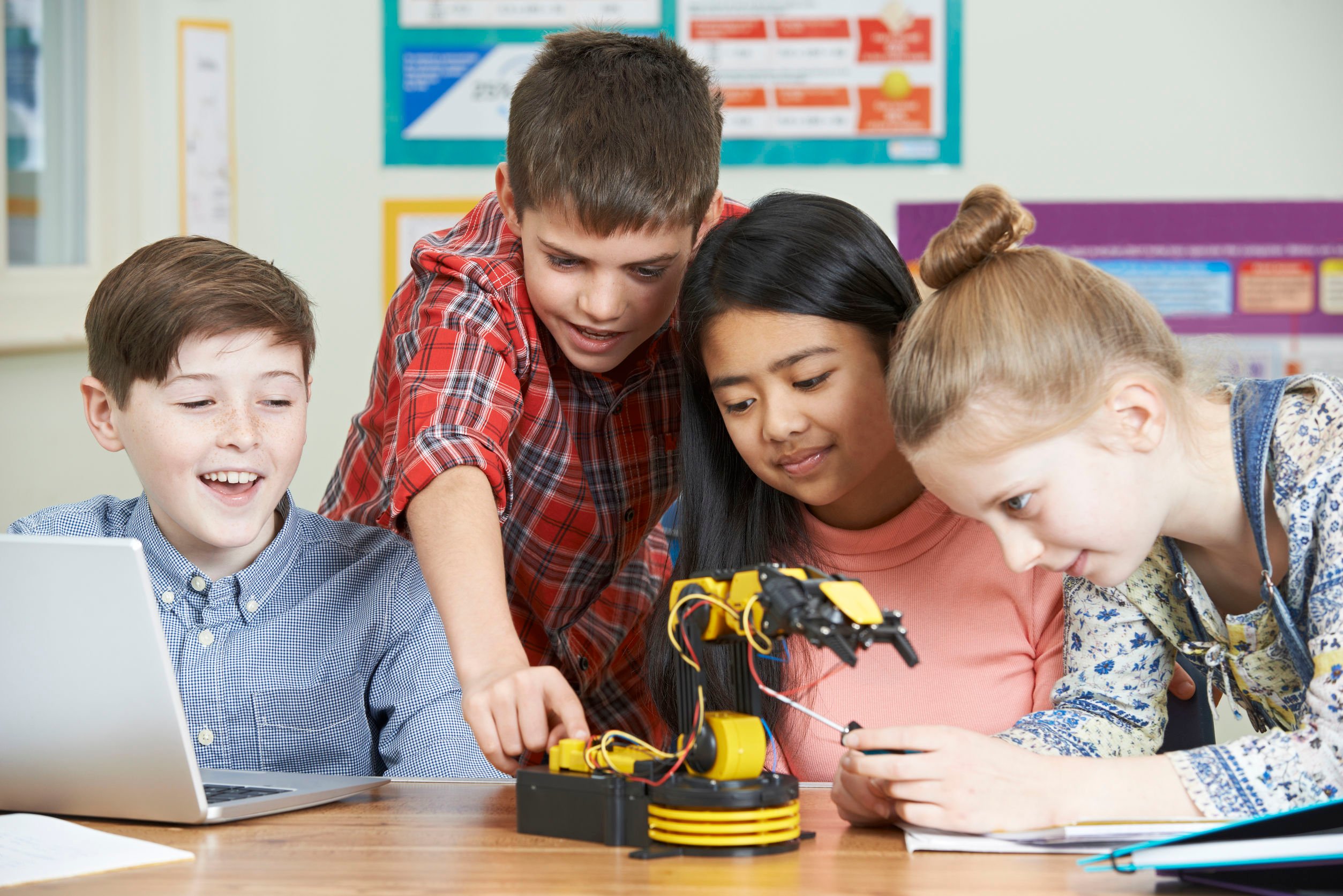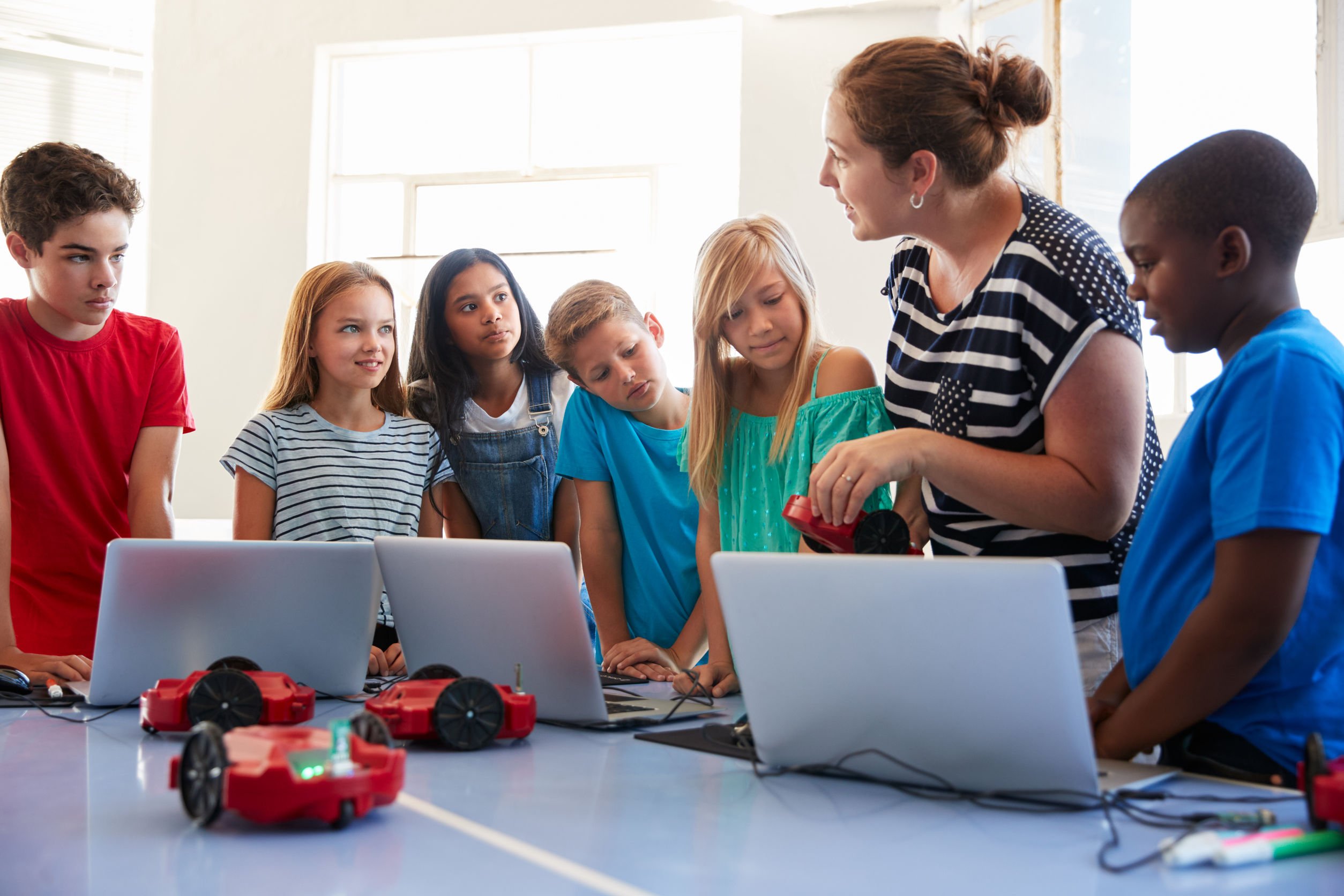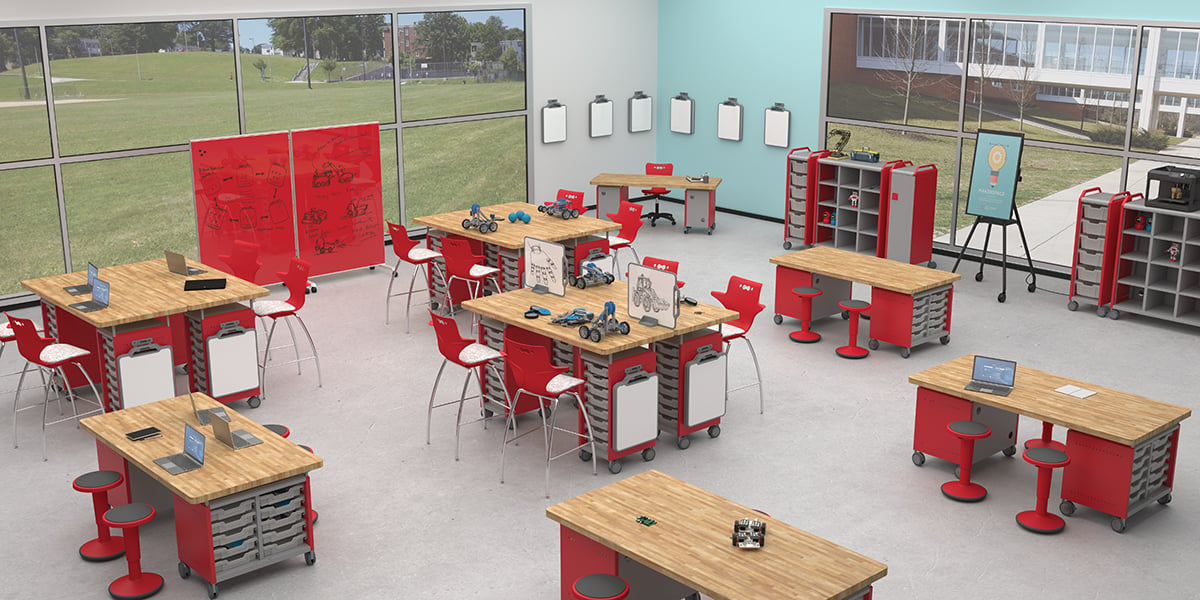Full STEAM Ahead: Prioritizing Inclusion and Discovery in Tomorrow's Classrooms
Posted by MooreCo Inc on Oct 16, 2020 1:37:10 PM
.jpg?width=2300&name=83003401_m%20(1).jpg)
Full STEAM Ahead: Prioritizing Inclusion and Discovery in Tomorrow's Classrooms
How can we help all students learn, given the events of this year? 2020 brought problems with traditional models of learning to the forefront, further widening existing learning gaps and leaving groups of students behind.
Remote learning has been difficult for many. According to USA Today, “15 million students don't have a computer or internet access. The digital gap is most acute in rural communities and in Black, Latino and Native American homes.” Experts predict this will have a ripple effect for years to come, and that many students will need extra assistance catching up.
But with these problems comes opportunity to reframe and reform how things have been done in the past, so that the focus can be on allowing all students to thrive. So what can be done to make sure all students and teachers have what they need to succeed in 2021 and beyond? Let’s take a look.

Growing Kids’ Abilities with STEAM
STEAM refers to a set of subjects that help prepare students for the jobs of today and tomorrow. It's an acronym for science, technology, engineering, art, and math. Helping students have access to great STEAM classes is necessary for their success. According to Forbes, “Ten of the top 14 fastest-growing industries require some kind of STEM training.” In schools around the world, STEAM classes create environments for creativity and strategic, collaborative problem solving. Robotic classes, for example, allows students to come together and put mathematics, science, and engineering into practice.
Although these courses can be life-changing when exposing students to a wide variety of needed skills, they are not available to everyone. Again from Talia Milgrom-Elcott of Forbes, “More than half of U.S. school districts, and more than 90 percent of districts primarily serving Black and Latinx students, reported difficulties recruiting and retaining certified, knowledgeable STEM teachers.” So although the economy is now geared toward jobs that revolve around tech and engineering, many students of color are not easily able to access this courses.
Race isn’t the only factor in this exclusion. The National Science Foundation found that male students were more likely to take engineering and AP computer science courses than their female peers. This disparity has a long-term effect, as women only occupy 28% of science and engineering jobs in the workforce overall.
Then there is the question about a difference in learning abilities. All students have different talents and skills, and those with special learning needs may be left behind without attention given to meet them where they are.
STEAM classes like Robotics can merge a variety of interests to engage students across a multitude of spectrums. With creative group thinking and problem solving, every student is able to find their role in a collaborative setting, as well as channel their own specifics skills.
Diversity, Inclusion, Equity, and Design
When considering possible solutions to creating equity among different groups of students so that all may thrive, there’s obviously a lot of factors to consider. One is the importance of conscious room design for educational environments. Classrooms that have the physical tools to facilitate group learning and enhanced discovery are more likely to produce successful students. That’s why makerspaces are being seen more and more in today’s classrooms.
Sylvia Martinez is the co-author of the book Invent to Learn: Making, Tinkering, and Engineering in the Classroom. She says that the “maker movement” in schools is a reflection of the 4th industrial revolution and that, “We are in an amazing period of history where innovative technology is bringing down the cost of industrial production and making it more achievable for everybody.” When asked about how makerspaces can include children of all backgrounds and learning abilities, Martinez had the following tips:
- “’Just do it ’may be a marketing slogan, but it is a powerful lesson for students to learn that they sometimes need to just jump in and try things. Lessons in school often overemphasize planning, but studies show that engineers and scientists most often use tinkering and other iterative methods to solve problems. When students can make something, and then make it better, they are learning just like real scientists and engineers do."
- "Look for culturally responsive, situated, and relevant projects. Seeing cultural practices in a maker light can open doors and blur the lines between teachers and learners and invite community and parents in to participate."
- "Be sensitive to gendered surroundings. Research shows that girls react to surroundings that reflect stereotypical “hacker” culture by denying that they are interested in science and engineering. If you aren’t sure what vibe your classroom or makerspace is communicating, ask some kids."
- "Reduce competition. Both overt contests and more subtle competition, like competition caused by a lack of adequate materials and tools, can reduce participation of girls. It can also be a barrier for beginners, at-risk students, and students who don’t see themselves as “technical.” The competition aspect raises the stakes to a level that is too risky for students to jump in and try something they may actually enjoy."
- "Don’t advantage one kind of building over another. Robots are cool, but the same technologies of microcontrollers, sensors, motors, and lights can make smart clothes, a useful invention for an elderly aunt, or better still, something no one has thought of before. Provide incentives, multiple on-ramps, praise, and glory for all kinds of making.”
Visit the Invent to Learn Authors' Page for Upcoming Events on Learning Here.
Listening to Teachers

Another path to understanding the needs of today’s students in a real way is by speaking directly to their teachers. What do teachers need in their classrooms to create an optimal environment for fun, growth, and achievement? For science, math, arts, and robotics teachers, it may mean organizational tools or furnishings that encourage autonomy and independence in their young pupils. If tools are easy to store and organize, students can access them easily without a need for help. If classroom furniture is mobile, highly functional, and sleek, teachers will be able to reach more students and have an easier time doing so.
Creating the Classrooms of Tomorrow

With the future comes great possibility. Each school, teacher, student, and parent now has a greater awareness of what they need to succeed in learning. Whether it’s more widespread internet access, readily available STEAM courses, or classroom environments that create discovery, society must now meet these students’ needs to create a better tomorrow. In our upcoming conference (Thrive Together: Creating the Classrooms of Tomorrow), we will discuss our proposed solutions and hear from real teachers and experts in the fields of education and design to co-create the classrooms of tomorrow. You can register here.
We’re Here to Help…
As always, we’re here to provide solutions for all spaces. Whether it’s navigating the future of learning, staying safe in today’s classrooms, or having leading-edge technology for remote learning and working, we’ve got what you need. Call us today if you have any questions about our offerings. We hope to see you at our upcoming conference!
Topics: Collaboration, Active Learning, Human Development, Active Classroom, Designer's Corner, Technology, learning from home, Diversity, Equity, and Inclusion, Educators
